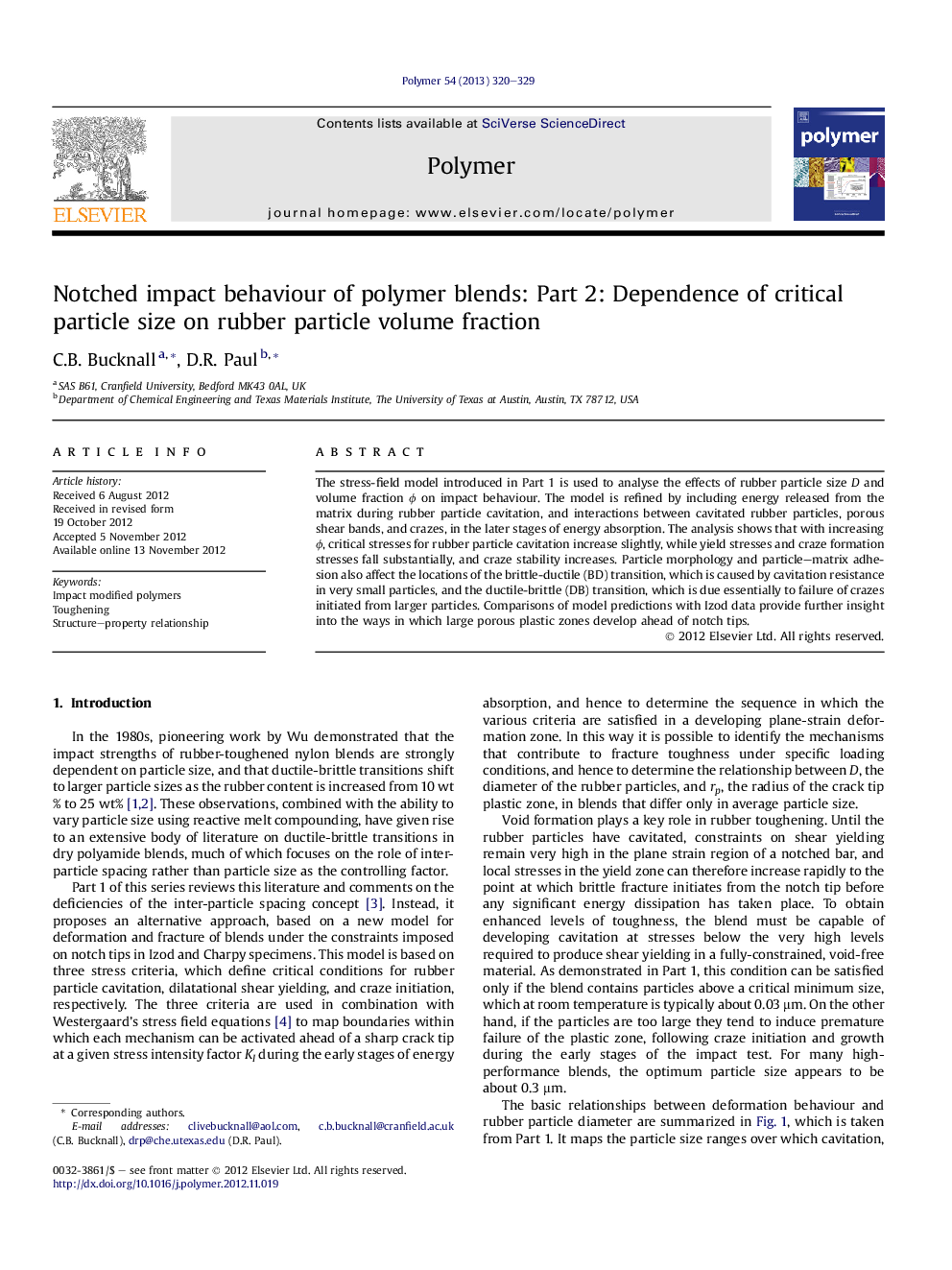| Article ID | Journal | Published Year | Pages | File Type |
|---|---|---|---|---|
| 5182740 | Polymer | 2013 | 10 Pages |
The stress-field model introduced in Part 1 is used to analyse the effects of rubber particle size D and volume fraction Ï on impact behaviour. The model is refined by including energy released from the matrix during rubber particle cavitation, and interactions between cavitated rubber particles, porous shear bands, and crazes, in the later stages of energy absorption. The analysis shows that with increasing Ï, critical stresses for rubber particle cavitation increase slightly, while yield stresses and craze formation stresses fall substantially, and craze stability increases. Particle morphology and particle-matrix adhesion also affect the locations of the brittle-ductile (BD) transition, which is caused by cavitation resistance in very small particles, and the ductile-brittle (DB) transition, which is due essentially to failure of crazes initiated from larger particles. Comparisons of model predictions with Izod data provide further insight into the ways in which large porous plastic zones develop ahead of notch tips.
Graphical abstractDownload full-size image
